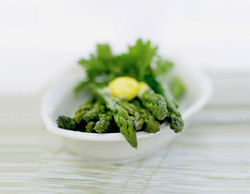COOKING METHODS
Each recipe has its own characteristics, its time, its ingredients, its pot but especially its kind of cooking.
I thought, therefore, to devote a page to this subject that I would call fundamental.
Let’s start by alphabetical order:
AU GRATIN
Gratin: It consists in producing a more or less thin crust over a cooked food. It’s done in the oven between 260° and300°.
BAIN MARIE
Bain marie: it’s a very delicate system of cooking that allows to control the temperature. It consists of immersing a pot or a pan with food inside a bigger one containing two thirds of water; or by placing a pot containing the food on another containing boiling water so that the contact with the heat source is not direct.
It is used for soufflé, melting chocolate, sauces and delicate cooking in general.
BAKING
Baking in the oven: The technique of baking must take place without the presence of liquid, fat or covers. It is usually used for cooking preparations that require placement in molds or plaques(sponge cake, bread, cake, etc.)
BOILNG
Boling: It’s a system of cookingby immersion. It consists of cooking foodinplenty of water. Depending onthe food andon the type ofpreparation, itmaybegin withhotorcold liquid, to reachthen the degree ofboiling.
BRAISING
Braising: Mixed cooking techniquemixedforwhich the foodis subjectedtoroastingfirst and to moist cooking after in successive timeswith the additionof gravy, wineor otherthat covers halfor one third of it. The cooking mustbe donewith a cover.
CANDY or CARAMELIZATION
Caramelization: It’s technique in which thefruit,through arepeated and prolongedimmersionat a temperature of175 °in a solution ofsugar,from time to time made increasinglysaturated, completelysoakssyrup. The sugar, absorbedin this way, replaceswater and,dryingit hardenstransformingthe fruit thatstill retainsshape and color,greaterconsistency, a concentrateperfumeand a longshelf life.
COOKING IN FOIL
Cooking in foil: The preparation in foil consists of putting food with perfumes and condiments, above an aluminum foil or baking paper, closing the ends to form a waterproof bag. Baking can be carried out in the oven or over a hot-plate.
DROWNING
Drowning: Consists of cooking food in a delicate manner by immersing it in a liquid with a temperature between 80 and90 degrees, hence the below boiling point.
FRY
Fry: Consists of immersing food in a fat substance (butter, oil, lard, etc.) at a temperature comprised between 160°and 180°depending on the type of food.
PARBOIL
Parboil: System used to keep alive the color of the vegetables and usually to degrease bones before using the min some preparations. Consists of immersing the vegetables in boiling water for a few seconds and then cool them in cold water and ice. To parboil the bones it start with cold water. It can be also done in oil at 130 °.
ROASTING
Roasting: consists of subjecting the food to a very high temperature with fat(oil, butter, etc.) but no liquids. Can be done in the oven, grill or skewer.
STEAMING
Steaming: you can steam in the oven, in a steamer, in bamboo baskets or in a pressure cooker. The food is not in direct contact with the water but '"suspended" in order to be cooked only by the water vapor once the water will have exceeded 100degrees.
STEW
Stew: Slow cooking technique over moderate heat in a covered casserole, so that the dish exude its liquids. It’s ideal for fish, watery vegetables and meat suitable for prolonged cooking. It important to avoid steam spillage.
STIR-FRY
Stir-fry: consists of cooking food with the addition of little fatty or liquid substance in a pan per forming a rotational movement vertically or horizontally so that, in fact, the food stir-fries in the pan.
VACUUM COOKING
Vacuum cooking: The food is cooked at a low temperature and for long after being put under vacuum with appropriate instruments. Use it to get amazing textures and flavors, even cooking.
WHISK
Whisk: it’s system to better tie pasta or rice with other ingredients by combining fat(butter, cheese, etc.) to the recipe.



















